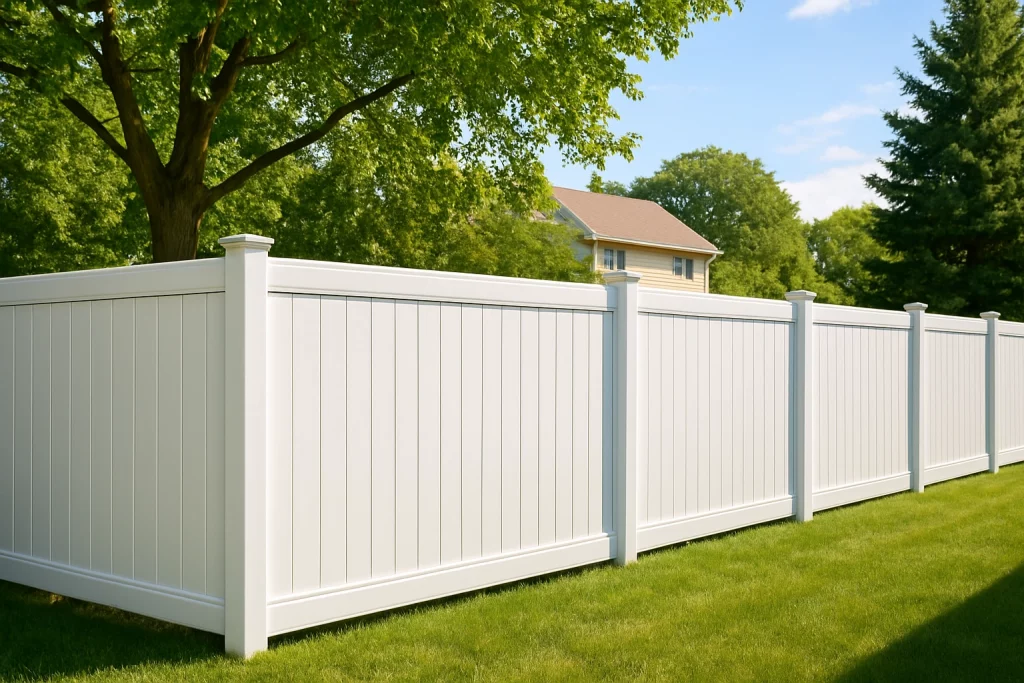UV Resistance of Vinyl Fences has become a defining factor for property owners who want durability, color retention, and minimal maintenance. Sunlight exposure can be harsh on most materials, but modern vinyl fencing is designed to endure it gracefully—maintaining structure, color, and appeal over decades.
In areas like Chicago, where strong UV radiation in summer contrasts sharply with freezing winters, high-quality vinyl is the key to long-lasting fence performance and consistent visual appearance.
Why UV Protection Matters
When exposed to sunlight, ultraviolet rays can cause polymer degradation, weakening materials over time. Vinyl fences avoid this through engineered UV inhibitors that prevent molecular breakdown.
A professionally installed vinyl fencing in Chicago IL system uses formulations with titanium dioxide and light stabilizers to reflect and absorb UV radiation before it penetrates the surface. This combination keeps fences strong, flexible, and resistant to chalking or fading for years.
The Chemistry Behind UV Resistance
The durability of vinyl lies in its material science. Modern vinyl compounds use:
Titanium dioxide pigments to deflect UV light.
Benzotriazole absorbers to neutralize UV energy.
Acrylic capstock layers to preserve color and gloss.
Together, these layers create a shield that prevents sunlight from reaching the fence’s inner polymer core. The result: fences that look new long after installation.
Environmental and Design Factors
UV performance also depends on color and surface finish. Lighter colors reflect sunlight better, reducing surface heat, while darker tones require stronger stabilizers. Smooth finishes resist dust and pollutants that can amplify sun damage.
High-quality vinyl panels with co-extruded layers ensure that both surface protection and internal stability work together, even when facing Chicago’s variable weather patterns.
Installation Standards and Craftsmanship
No material performs optimally without correct installation. Professional craftsmanship prevents stress and warping, allowing the fence to expand and contract naturally with temperature changes.
Partnering with reliable chicago commercial fence contractors ensures proper alignment, post anchoring, and hardware selection—factors that directly affect long-term UV stability. Correct post spacing and expansion gaps let panels breathe while keeping lines straight and visually balanced.
Performance in Harsh Weather Conditions
Summer Heat
During hot months, vinyl fences with built-in stabilizers maintain flexibility while resisting warping and fading. Surface coatings prevent heat absorption, keeping the fence cool to the touch.
Winter Exposure
When temperatures drop below freezing, flexibility matters most. Additives in premium vinyl keep it impact-resistant, avoiding cracking or splitting during frost.
Rain and Humidity
Vinyl’s non-porous surface resists moisture penetration. Mold or mildew can appear only superficially and can be easily washed away, unlike in wood or metal fences.
Maintenance for Long-Term UV Protection
Maintenance of UV-resistant vinyl fences is simple:
Wash twice a year with mild soap and water.
Inspect joints and fasteners for tightness.
Avoid harsh chemicals that strip protective layers.
Clear debris around posts to prevent water retention.
This low-effort routine preserves both appearance and performance, even in high-UV environments.
Combining Materials for Performance and Style
A great way to complement vinyl fencing is by combining it with other durable materials. For example, chain link fence in Chicago provides a practical, secure solution for perimeters where airflow and visibility are key.
Blending vinyl with chain link or even aluminum sections can enhance both design and functionality, offering strength and modern aesthetics while maintaining UV resistance where it matters most.
Quality Standards and Testing
Before reaching consumers, vinyl fencing products undergo accelerated weathering tests under artificial UV exposure to simulate years of sunlight. The goal is to verify that stabilizers and pigments maintain performance over time.
Organizations such as ASTM International establish standardized methods for evaluating polymer weatherability and long-term color stability. These standards ensure that the vinyl you choose meets proven benchmarks for durability, safety, and outdoor endurance.
Complementary Material for Durability
For property owners seeking design variety and higher structural rigidity, Chicago Aluminum Fences offer excellent UV resilience and corrosion resistance. Their sleek, modern appearance makes them a perfect visual partner to vinyl panels in mixed-material fencing systems.
Conclusion
UV resistance defines the true longevity of vinyl fences. With proper materials, expert installation, and occasional maintenance, property owners can enjoy beautiful, fade-resistant fencing for decades.
When combined with complementary materials like aluminum or chain link, vinyl fences become a complete solution—balancing aesthetics, sustainability, and strength. Backed by industry standards from ASTM, this technology proves that innovation and craftsmanship can create fences that truly stand the test of time.

